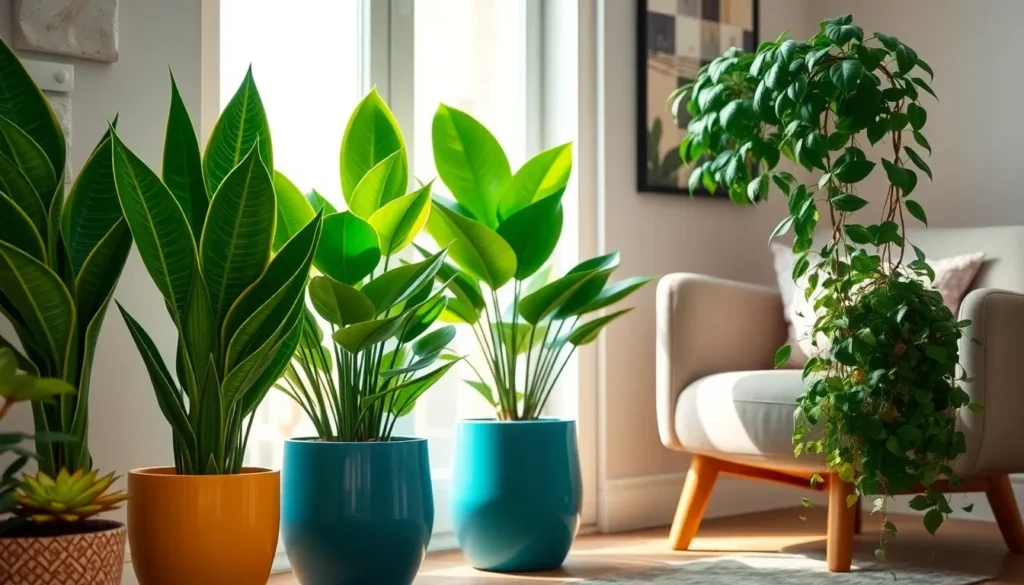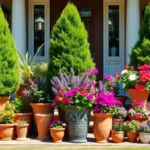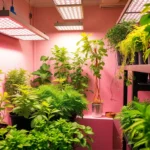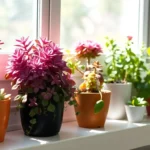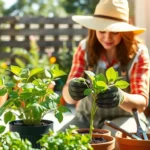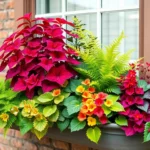We all crave that perfect green oasis in our homes but let’s face it – keeping plants alive can feel like a full-time job. Between busy schedules work commitments and travel plans many of us have watched our leafy friends wither away even though our best intentions. The good news? You don’t need a green thumb to transform your living space into a thriving indoor garden.
Low maintenance indoor plants are the game-changers we’ve all been waiting for. These resilient beauties can handle neglect adapt to various lighting conditions and still reward us with stunning foliage and air-purifying benefits. Whether you’re a complete beginner or someone who’s killed every plant they’ve touched these hardy varieties will help you finally achieve that Instagram-worthy plant paradise.
We’re about to introduce you to the most forgiving foolproof plants that’ll thrive in your home with minimal effort. Get ready to discover your new green companions that actually want you to succeed.
Snake Plant: The Ultimate Beginner’s Indoor Plant
Snake plants stand out as the perfect choice for new plant parents who want greenery without constant maintenance.
Tolerates Low Light and Irregular Watering
Snake plants thrive in almost any lighting condition from bright indirect light to dim corners of your home. These adaptable beauties can survive in spaces with minimal natural light where other plants would struggle or wilt. We’ve seen snake plants flourish in windowless bathrooms, dark hallways, and office cubicles with only fluorescent lighting.
Watering becomes incredibly simple with snake plants since they prefer drought conditions over frequent moisture. You can water them every 2-4 weeks during growing season and even less during winter months. Their thick succulent leaves store water efficiently, making them nearly impossible to kill through neglect. Overwatering poses the only real threat to snake plants, so less attention actually helps them thrive better.
Root rot occurs when snake plants sit in soggy soil, but their natural drought tolerance prevents this common houseplant problem. We recommend letting the soil dry completely between waterings and using well-draining potting mix. Terra cotta pots work excellently for snake plants because they allow excess moisture to evaporate through the porous material.
Air Purifying Benefits for Your Home
Snake plants earned recognition from NASA’s Clean Air Study for removing harmful toxins from indoor air. They filter out benzene, formaldehyde, trichloroethylene, and xylene – common pollutants found in household products and building materials. One snake plant can purify the air in a 100 square foot room effectively.
Nighttime oxygen production sets snake plants apart from most houseplants that only photosynthesize during daylight hours. They continue releasing oxygen and absorbing carbon dioxide while you sleep, making them ideal bedroom companions. This unique characteristic comes from their CAM (Crassulacean Acid Metabolism) photosynthesis process that helps them conserve water in their native desert environments.
Improved indoor air quality leads to better sleep, reduced allergies, and enhanced overall health for your family. We place snake plants in bedrooms, living rooms, and home offices to maximize their air cleaning benefits throughout our homes. Their tall upright growth pattern also makes them excellent natural air filters that don’t take up much floor space.
ZZ Plant: Glossy Green Beauty That Thrives on Neglect
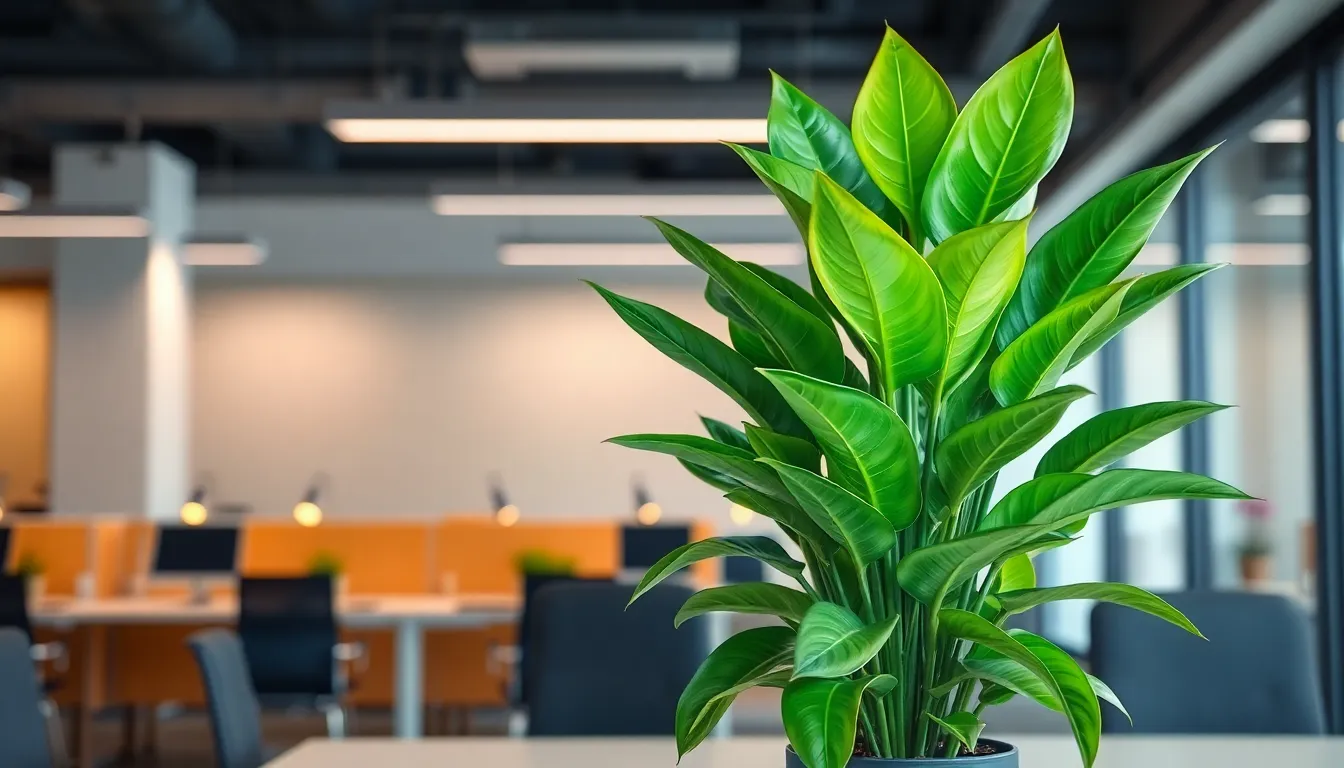
Meet the ZZ Plant (Zamioculcas zamiifolia), also known as the Zanzibar Gem, a stunning houseplant that’s practically indestructible. This resilient beauty features glossy, dark green compound leaves with 6 to 8 pairs of leaflets that grow upright from underground rhizomes, creating an elegant display that enhances any indoor space.
Perfect for Busy Professionals and Frequent Travelers
Busy schedules don’t have to mean sacrificing beautiful indoor greenery when you choose the ZZ Plant. This remarkable plant tolerates weeks of neglect without showing signs of stress, making it ideal for professionals who work long hours or travel frequently for business. We’ve found that the ZZ Plant’s underground rhizome system stores water and nutrients, allowing it to survive extended periods without attention.
Frequent travelers can leave home for weeks knowing their ZZ Plant will thrive in their absence. The plant’s ability to adapt to varying conditions means you won’t return to wilted or dead foliage after extended trips. Business professionals appreciate how this low maintenance option fits seamlessly into demanding lifestyles while providing the mental health benefits of indoor plants.
Drought Resistant and Low Light Friendly
Drought resistance makes the ZZ Plant exceptionally forgiving for those who forget to water regularly. We recommend allowing the soil to dry completely between waterings, as this plant actually prefers dry conditions over moist soil. The swollen leaf bases and rhizome system work together to store moisture, enabling the plant to tolerate dry soil conditions and low humidity environments.
Low light tolerance sets the ZZ Plant apart from many other houseplants that struggle in dim conditions. These plants thrive in offices with fluorescent lighting, bathrooms without windows, and corners of rooms that receive minimal natural sunlight. Unlike many houseplants that require bright indirect light, the ZZ Plant performs exceptionally well in low to medium light conditions, making it perfect for spaces where other plants would fail.
Pothos: The Trailing Wonder for Any Indoor Space
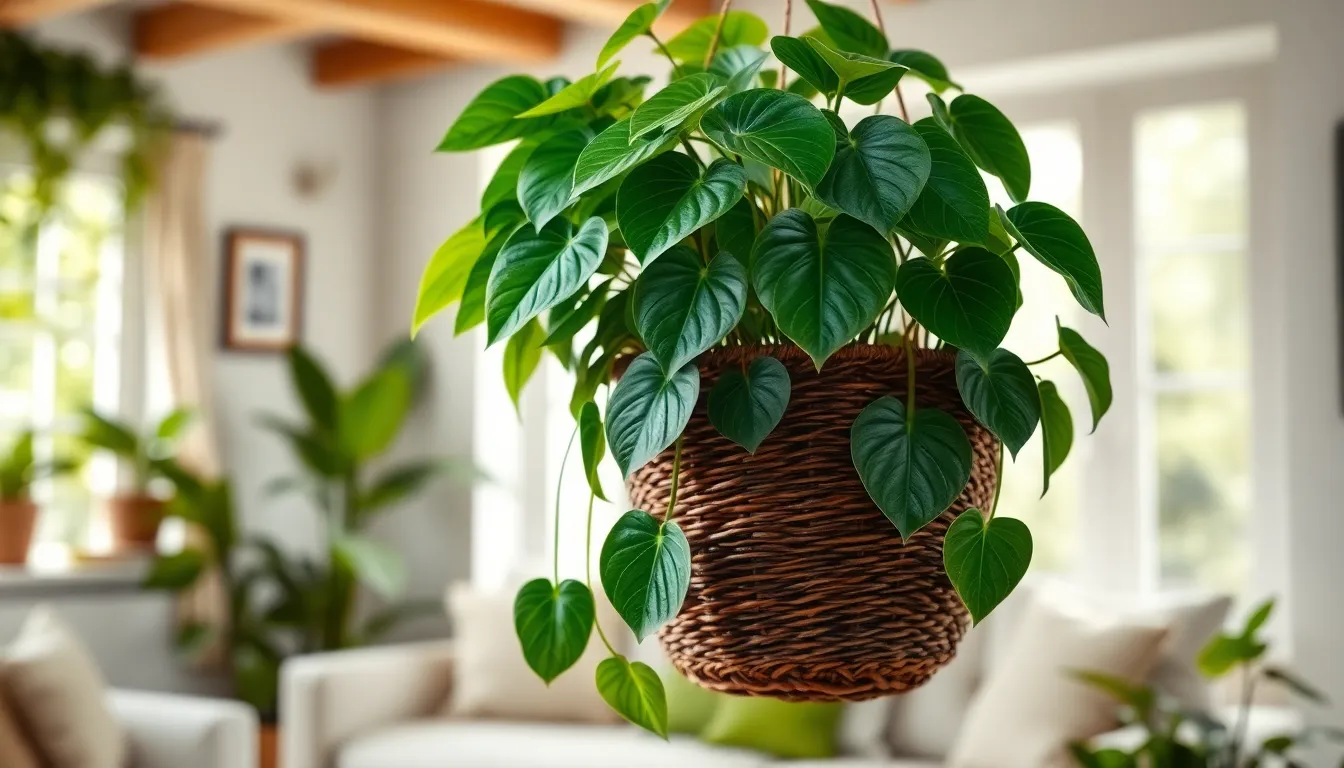
We’ve discovered that Pothos (Epipremnum aureum) stands out as one of the most rewarding low maintenance plants for indoor spaces. Its heart-shaped leaves cascade beautifully from hanging baskets or climb up moss poles, creating stunning visual displays in any room.
Easy Propagation for Expanding Your Plant Collection
Growing new Pothos plants couldn’t be simpler, making it perfect for expanding our indoor garden collection. We can cut a segment of the vine that includes at least one node and place it directly in water or moist soil. New roots develop rapidly within just a few weeks, allowing us to create multiple plants from a single parent vine.
Sharing Pothos cuttings with friends and family becomes effortless due to this simple propagation method. We can fill additional spaces throughout our home or gift these new plants to loved ones. The trailing nature of Pothos means each cutting will eventually develop into a full, cascading plant that adds natural beauty to any environment.
Adapts to Various Lighting Conditions
Thriving in everything from low light corners to bright indirect sunlight makes Pothos incredibly versatile for our indoor spaces. We can place it in rooms with limited natural light, such as bathrooms or offices, where other plants might struggle to survive. But, Pothos grows faster and displays more vibrant leaf coloration when positioned in medium to bright, indirect light conditions.
Tolerating various lighting scenarios means we don’t need to worry about finding the perfect spot in our home. Unlike many houseplants that require exact lighting requirements, Pothos adapts to whatever conditions we provide. We only need to water it when the soil dries out and ensure it has well-drained soil to prevent root rot, making it an ideal choice for busy lifestyles.
Peace Lily: Elegant Flowers With Minimal Care Requirements
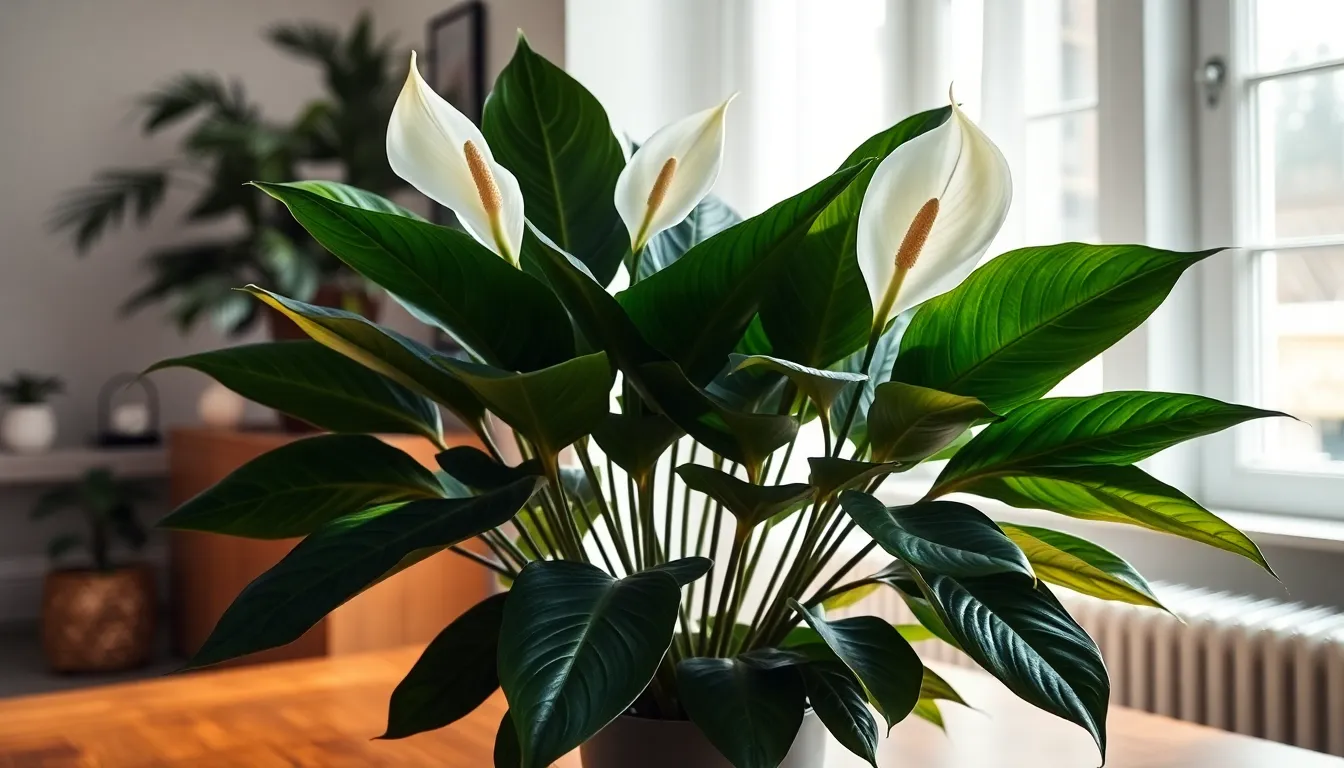
The Peace Lily stands out as one of our favorite low maintenance indoor plants, combining stunning visual appeal with practical benefits. We’re particularly drawn to this elegant houseplant because it delivers both beautiful white blooms and exceptional air purifying capabilities without demanding constant attention.
Natural Air Purifier With Beautiful White Blooms
Peace Lilies function as natural air purifiers while adding sophisticated elegance to any interior space with their graceful white flowers and lush dark green foliage. These plants actively filter harmful toxins from indoor air, making our homes healthier environments to live and breathe in. We love how the striking white blooms emerge from the deep green leaves, creating a dramatic contrast that serves as a living piece of art.
The flowering capability sets Peace Lilies apart from many other low maintenance houseplants, giving us both decorative value and clean air benefits. Unlike purely foliage plants, these beauties reward our minimal care efforts with spectacular white spathes that can last for weeks. We appreciate how the flowers maintain their crisp white appearance in typical indoor lighting conditions, brightening up corners and spaces that might otherwise feel dull.
Clear Watering Signals Through Drooping Leaves
Peace Lilies eliminate the guesswork from plant care by providing obvious visual cues when they need water through their distinctive drooping leaves. We find this natural communication system incredibly helpful because it removes the anxiety of wondering whether our plant needs attention. When the leaves begin to droop noticeably, we know it’s time to water, making plant care as simple as responding to clear signals.
This drooping mechanism prevents both overwatering and underwatering, the two most common mistakes that kill houseplants. We’ve discovered that Peace Lilies bounce back quickly after watering, with leaves returning to their upright position within hours of receiving moisture. The reliability of this watering signal means we can confidently care for our Peace Lilies without constantly checking soil moisture or following rigid watering schedules.
Rubber Plant: Statement Foliage That Forgives Mistakes
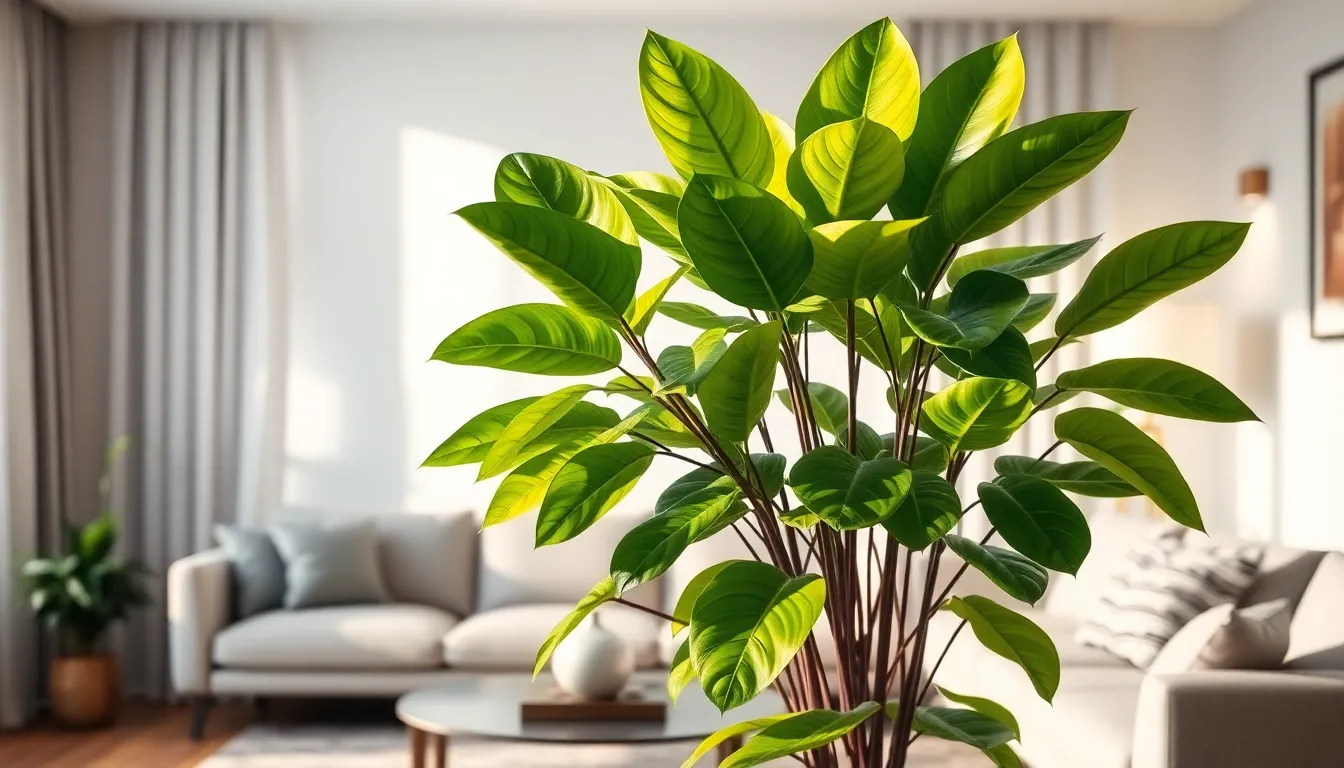
The Rubber Plant (Ficus elastica) stands out as one of our favorite low maintenance plants for creating dramatic indoor statements. Its striking, glossy foliage transforms any space while requiring minimal attention from busy plant parents.
Grows Large With Minimal Intervention
Rubber plants develop into impressive specimens that can reach substantial heights indoors without constant pruning or special care techniques. These plants naturally grow tall and full, creating the perfect focal point for living rooms, offices, or entryways where you want maximum visual impact with minimum effort.
Medium to bright indirect light provides the ideal growing conditions, though these adaptable plants tolerate lower light levels surprisingly well. You won’t need to constantly relocate your rubber plant or invest in grow lights since it adjusts to various lighting situations throughout your home.
Occasional leaf cleaning represents the most maintenance you’ll typically need to perform, simply wiping the glossy surfaces with a damp cloth to remove dust and support healthy photosynthesis. This simple task keeps your plant looking vibrant while ensuring it can efficiently process light and air.
Tolerates Inconsistent Care Routines
Irregular watering schedules pose no important threat to rubber plants, making them perfect companions for people with unpredictable lifestyles or those who travel frequently. Their forgiving nature means missing a watering session won’t result in plant casualties or guilt.
Soil drying between waterings actually benefits these resilient plants since they prefer moderate drought conditions over constantly moist soil. This preference helps prevent root rot while accommodating our tendency to either overwater or forget watering entirely.
Inconsistent care routines that would stress or kill other houseplants become manageable challenges for rubber plants, which have evolved to handle periods of neglect. Their robust constitution means you can focus on other priorities without worrying about plant health declining rapidly.
Spider Plant: Fast-Growing Green With Natural Offspring
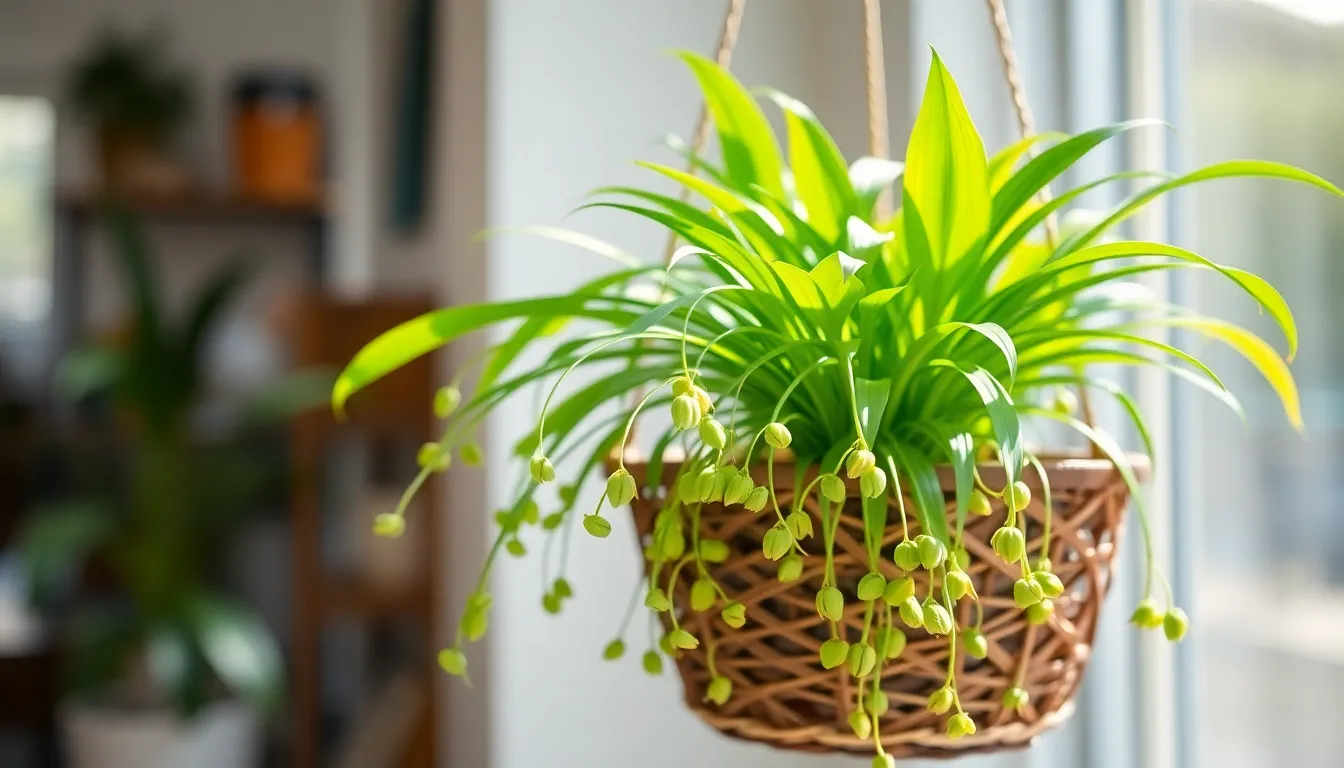
Spider plants (Chlorophytum comosum) stand out among low maintenance plants indoor for their unique ability to reproduce naturally while requiring minimal care. This fast-growing beauty combines easy care requirements with the bonus of creating new plants for your collection.
Produces Baby Plants for Easy Sharing
Spider plants frequently produce “baby” plantlets, or offsets, that naturally grow from the mother plant on long, arching stems. These miniature replicas dangle gracefully from the parent plant, creating a cascading effect that’s both beautiful and functional. We can easily propagate these plantlets by placing them in water until roots develop, then transplanting them into soil.
Sharing becomes effortless when your spider plant produces multiple offspring throughout the growing season. Friends and family members will appreciate receiving these ready-to-grow baby plants that require no special propagation skills. The natural reproduction process means you’ll have a continuous supply of new plants without purchasing additional specimens.
Thrives in Hanging Baskets or Tabletop Displays
Hanging baskets showcase spider plants at their finest, allowing the long stems and baby plantlets to cascade naturally. The trailing habit creates an impressive display that adds vertical interest to any room while maximizing floor space. We recommend positioning hanging spider plants in areas with bright, indirect light for optimal growth and plantlet production.
Tabletop displays work equally well for spider plants, especially when you want to observe the fascinating development of baby plants up close. These versatile plants adapt to various container sizes and styles, from traditional pots to modern planters. The compact root system means spider plants won’t quickly outgrow their containers, making them perfect for smaller spaces like desks, shelves, or plant stands.
Spider plants require infrequent watering, preferring soil that dries out between waterings, which prevents the common mistake of overwatering. Their air-purifying abilities improve indoor air quality while their fast-growing nature provides quick satisfaction for new plant parents.
Aloe Vera: Functional Succulent With Healing Properties
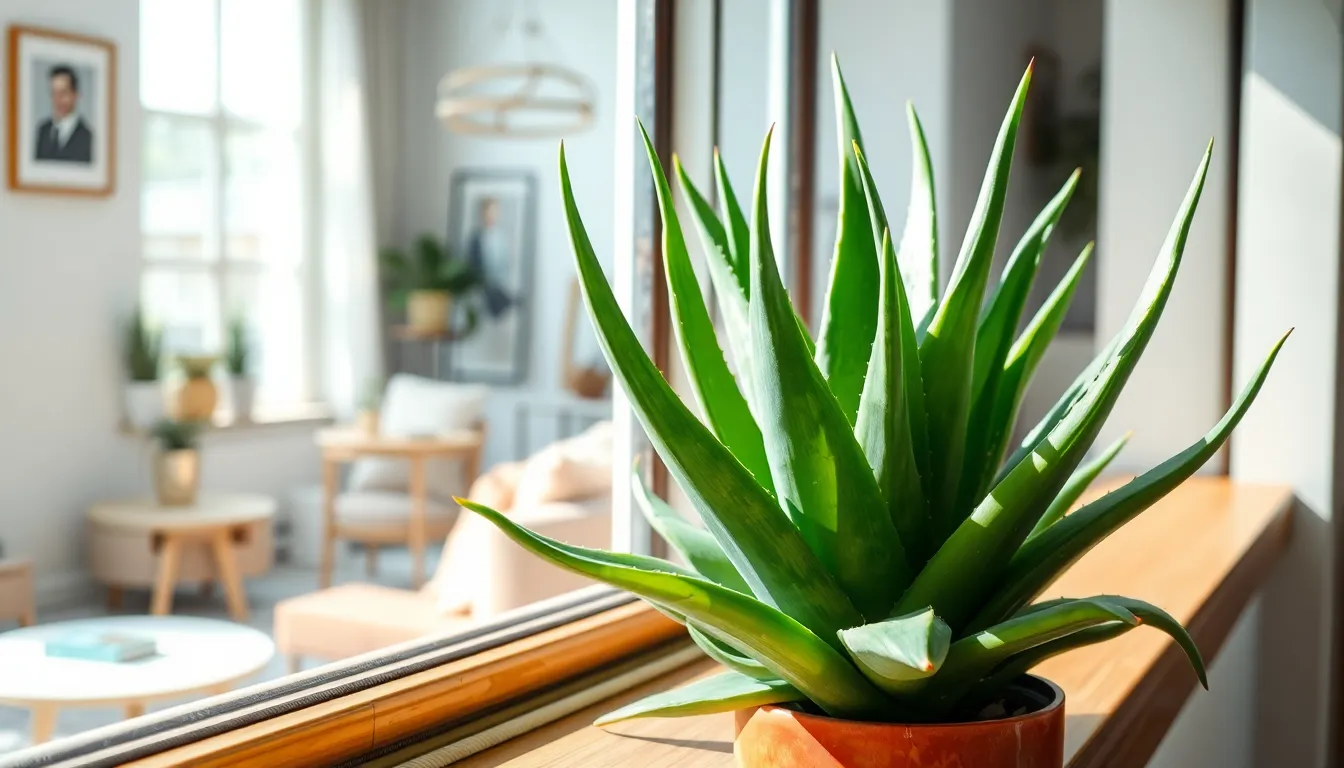
Aloe Vera stands out among low maintenance plants for combining practical healing benefits with stunning architectural beauty. This remarkable succulent offers homeowners both functional and decorative value while requiring minimal care.
Medicinal Benefits for Minor Burns and Cuts
Healing properties make Aloe Vera a valuable addition to any home first aid collection. The clear gel inside its thick leaves contains compounds that naturally soothe skin irritation and promote faster healing of minor burns and cuts. We can simply break off a leaf section and apply the fresh gel directly to affected areas for immediate relief.
Anti-inflammatory compounds within the plant help reduce redness and swelling associated with minor skin injuries. Many households keep Aloe Vera plants specifically for treating kitchen burns, sunburns, and small scrapes without needing store-bought remedies. The gel provides cooling relief that feels particularly soothing on heated or irritated skin.
Natural antibacterial properties help prevent infection in minor wounds while the healing process occurs. Unlike commercial gels that may lose potency over time, fresh Aloe Vera gel maintains its effectiveness when harvested directly from the plant. This makes our indoor Aloe Vera essentially a living medicine cabinet that’s always ready when needed.
Water-Storing Abilities Reduce Watering Frequency
Succulent characteristics allow Aloe Vera to store substantial amounts of water in its fleshy leaves, dramatically reducing maintenance requirements. These thick, plump leaves act as natural reservoirs that sustain the plant through extended periods without watering. We typically need to water our Aloe Vera plants only once every 2-3 weeks during growing season.
Drought tolerance makes this plant nearly impossible to kill through neglect, though overwatering poses the primary risk to plant health. The plant’s water storage system means we should always allow soil to dry completely between watering sessions to prevent root rot. This forgiving nature makes Aloe Vera perfect for busy schedules or frequent travelers.
Minimal water needs during winter months drop to approximately once per month, as the plant enters a slower growth phase. Signs of thirst include slightly wrinkled or softer leaves, but healthy Aloe Vera plants can survive several weeks beyond this point without permanent damage. This incredible resilience eliminates the stress of maintaining strict watering schedules while still enjoying beautiful, functional greenery in our homes.
Philodendron: Heart-Shaped Leaves for Instant Charm
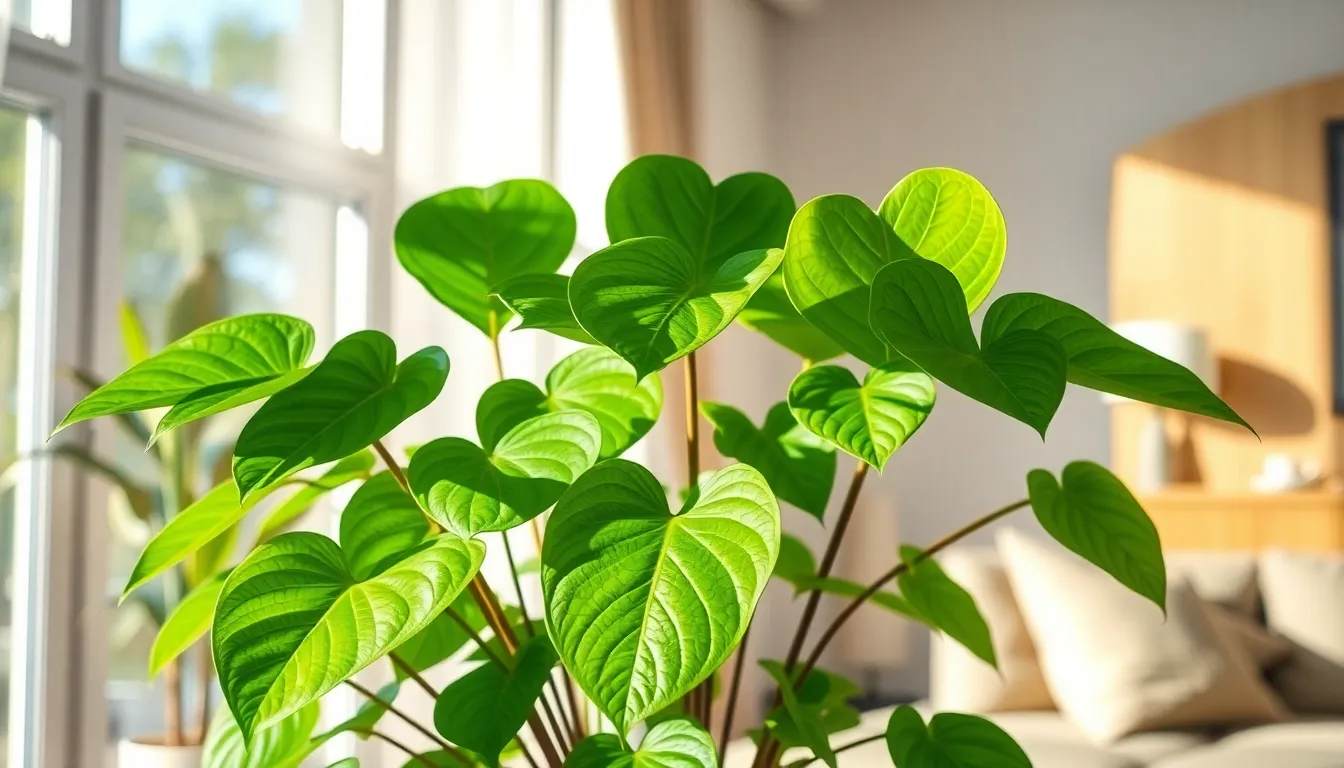
Philodendrons bring instant visual appeal to any indoor space with their distinctive heart-shaped leaves and trailing vines. These versatile plants offer both beauty and practicality for creating stunning indoor gardens.
Variety of Species for Different Aesthetic Preferences
Philodendrons come in a wide variety of species, allowing us to choose plants that perfectly match our interior design preferences. Each species offers unique leaf patterns, colors, and growth habits that can complement different room styles and personal tastes.
Classic varieties include the heartleaf philodendron with its deep green, glossy foliage that creates a timeless look in any space. Variegated options feature stunning cream and green patterns that add visual interest and brightness to darker corners.
Trailing species work beautifully in hanging baskets, creating cascading green displays that draw the eye upward and add vertical dimension to rooms. Climbing varieties can be trained up moss poles or trellises, making them perfect for creating living room focal points or natural room dividers.
Some species produce larger leaves while others maintain compact growth, giving us flexibility to choose plants that fit our available space perfectly.
Adapts Well to Indoor Environmental Changes
Philodendrons excel at adapting to changing indoor conditions, making them ideal for homes and offices with varying environmental factors. These resilient plants tolerate a range of lighting conditions from low to bright indirect light without stress or damage.
Lighting flexibility means we don’t need to worry about finding the perfect spot or moving our plants constantly as seasons change. They thrive in both dimly lit corners and brighter areas near windows, adapting their growth patterns accordingly.
Humidity tolerance allows philodendrons to survive in typical indoor environments, though they prefer moderate humidity levels. Most homes and offices provide sufficient moisture in the air without requiring special humidifiers or misting routines.
Temperature stability comes naturally to these plants, as they remain comfortable in standard indoor temperatures between 65-78°F. Seasonal temperature fluctuations don’t stress philodendrons like they might affect more sensitive plant varieties.
Their well-drained soil preference means we can use standard potting mixes without complicated soil amendments, and their pest resistance reduces the need for frequent monitoring or treatment applications.
Chinese Evergreen: Colorful Foliage Without High Maintenance
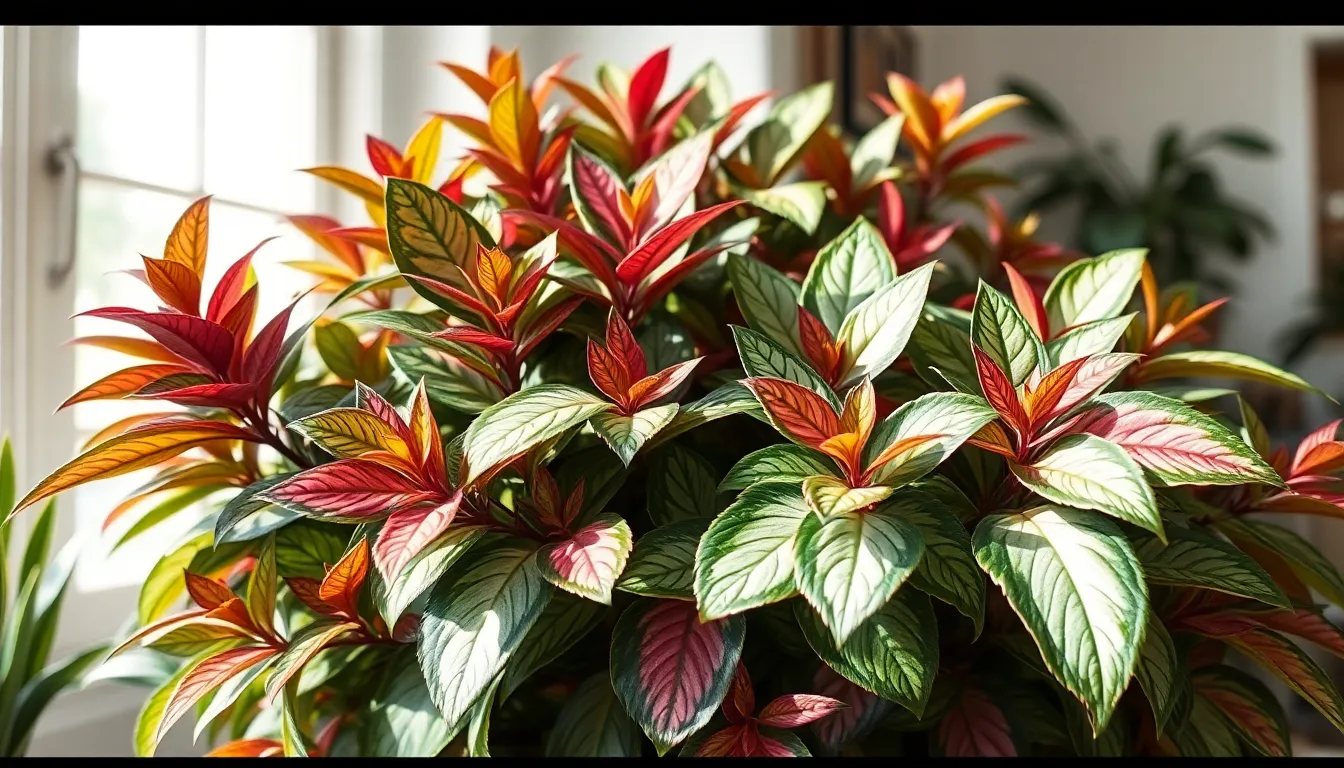
Chinese Evergreen stands out among low maintenance plants indoor with its vibrant foliage and minimal care requirements. We’ve found this popular houseplant delivers stunning visual impact while tolerating the challenging conditions that often defeat other indoor plants.
Stunning Leaf Patterns in Multiple Color Combinations
Aglaonema offers an impressive array of leaf patterns that transform any indoor space into a colorful oasis. We appreciate how these plants showcase variegated leaves in combinations of green, silver, pink, red, and cream tones that create natural artwork without requiring artistic skills. Beautiful patterns range from speckled designs to bold striping, with some varieties featuring dramatic pink and red accents that rival flowering plants.
Different cultivars provide distinct aesthetic options for various interior design preferences. Popular varieties include Silver Bay with its silver and green marbling, Red Aglaonema with striking pink and red highlights, and Maria Christina with cream and green variegation. These color combinations remain vibrant year round, unlike seasonal flowers that fade or require replacement.
Attractive leaf shapes complement the stunning color patterns, featuring broad oval leaves that grow in compact clusters. Each leaf displays unique markings that make every plant slightly different, creating personalized natural decoration for homes and offices. These distinctive patterns maintain their intensity even in challenging indoor conditions where other colorful plants might lose their vibrancy.
Tolerates Low Humidity and Artificial Lighting
Chinese Evergreen thrives in typical indoor environments where humidity levels often challenge other houseplants. We’ve observed these resilient plants adapt well to artificial lighting conditions commonly found in offices, bedrooms, and bathrooms without requiring special equipment or frequent adjustments. Low light tolerance allows placement in areas with minimal natural sunlight, making them perfect for spaces that receive only ambient light sufficient for reading.
| Environmental Condition | Chinese Evergreen Tolerance |
|---|---|
| Humidity Level | Low to moderate (30-50%) |
| Light Requirements | Low to indirect light |
| Watering Frequency | Moderate (when soil surface dries) |
| Temperature Range | 65-80°F (18-27°C) |
Moderate watering requirements make Chinese Evergreen particularly suitable for busy lifestyles or irregular schedules. These plants prefer soil that stays moist but not waterlogged, eliminating the guesswork that often leads to plant care mistakes. Watering needs decrease during winter months when growth naturally slows, requiring even less attention during the most challenging indoor growing season.
Various indoor environments accommodate Chinese Evergreen successfully, from dim office cubicles to steamy bathrooms. Living rooms, bedrooms, and hallways all provide suitable conditions for these adaptable plants. Their tolerance for different lighting situations means we can place them wherever color and greenery are needed most, rather than being limited by strict environmental requirements.
Cast Iron Plant: Lives Up to Its Tough Reputation
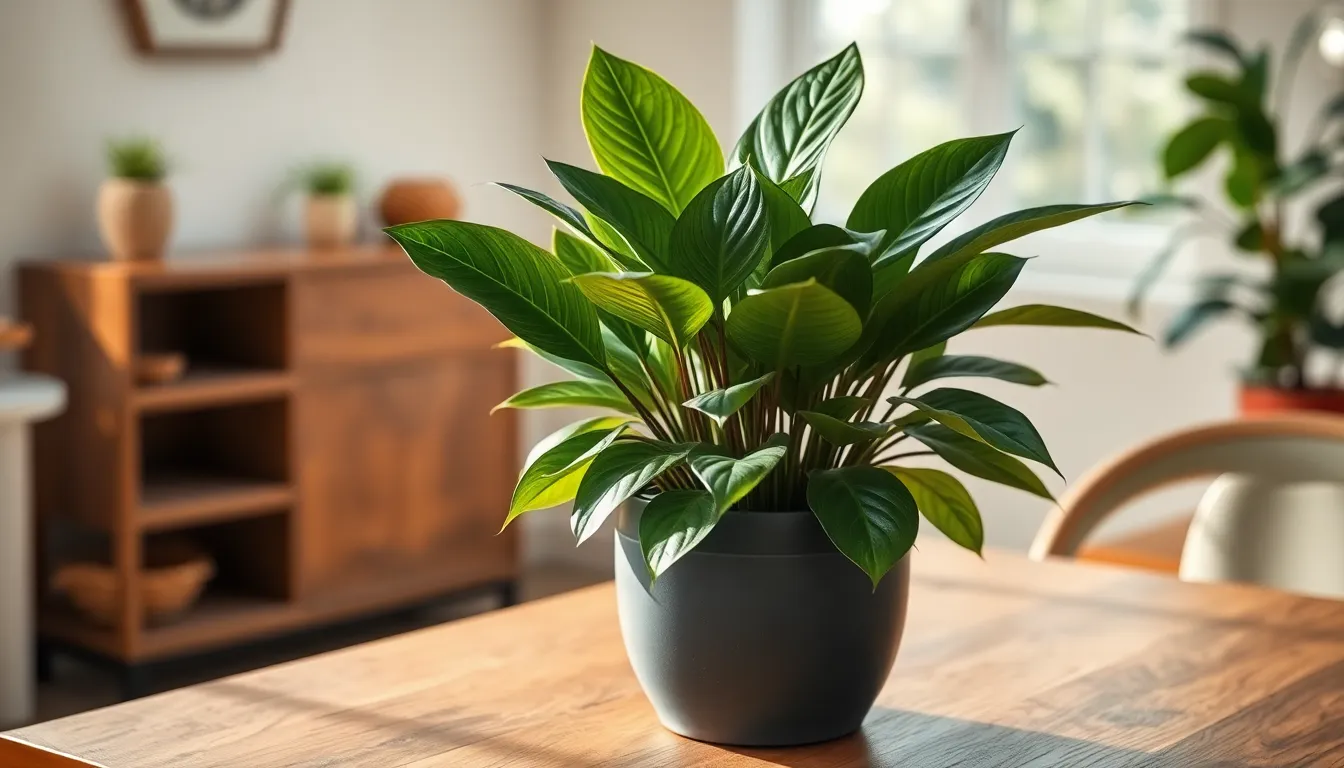
When it comes to nearly indestructible houseplants, the Cast Iron Plant (Aspidistra elatior) truly earns its metallic nickname. This remarkable plant stands as the ultimate choice for anyone seeking gorgeous greenery without the stress of constant care.
Survives in Almost Any Indoor Condition
Cast Iron Plants thrive where other houseplants struggle or fail completely. These resilient champions adapt to low light environments that would leave most plants looking pale and stretched. Dark corners, windowless bathrooms, and dimly lit offices become perfect homes for this adaptable species.
Irregular watering schedules don’t faze these tough performers. We’ve seen Cast Iron Plants bounce back from weeks of drought and forgive the occasional overwatering mistake. Their robust root system stores enough moisture to weather extended dry periods without showing signs of stress.
Temperature fluctuations that kill sensitive plants barely register with Aspidistra elatior. Cold drafts from air conditioning units or heat from radiators won’t damage their sturdy constitution. These plants maintain their lush appearance through seasonal changes and varying indoor climates.
Neglect actually suits Cast Iron Plants better than excessive attention. They prefer being left alone rather than receiving constant fussing and frequent repotting. This hands off approach aligns perfectly with busy lifestyles and unpredictable schedules.
Slow Growing but Extremely Resilient
Cast Iron Plants prioritize longevity over rapid expansion in your indoor garden. Their measured growth rate means you’ll enjoy the same beautiful plant for years without worrying about constant pruning or frequent repotting. This steady development creates a reliable green presence that anchors your indoor plant collection.
Durability defines every aspect of the Cast Iron Plant’s character. Those broad, dark green leaves can withstand bumps from passing pets, children, and daily household activities. Their thick, leathery texture resists tearing and damage that would devastate more delicate houseplants.
Patience rewards Cast Iron Plant owners with decades of beautiful foliage. These slow growers often become family heirlooms, passing from one generation to the next while maintaining their striking appearance. Their extended lifespan makes them an excellent investment for anyone wanting long term indoor greenery.
Minimal intervention keeps Cast Iron Plants looking their absolute best. Occasional dusting of their broad leaves maintains their natural shine, while infrequent watering and rare fertilizing sessions provide all the care they need. This low maintenance approach suits our modern lifestyles perfectly while delivering maximum visual impact.
Conclusion
Creating a thriving indoor garden doesn’t have to be complicated or time-consuming. With these resilient plant varieties we’ve explored you can enjoy the benefits of greenery without the stress of constant maintenance.
Whether you’re drawn to the architectural beauty of snake plants the cascading elegance of pothos or the colorful patterns of Chinese evergreens there’s a perfect low-maintenance option for your space and lifestyle. These plants prove that anyone can successfully cultivate an indoor oasis regardless of experience level or available time.
Start with one or two of these forgiving varieties and watch as they transform your living space into a healthier more vibrant environment. Your future self will thank you for choosing plants that grow beautifully with minimal effort.
Frequently Asked Questions
What are the best low-maintenance indoor plants for beginners?
The top low-maintenance indoor plants for beginners include Snake Plants, ZZ Plants, Pothos, Peace Lilies, and Rubber Plants. These varieties are forgiving, adapt to various lighting conditions, and require minimal watering. They’re perfect for new plant parents who want beautiful greenery without the stress of constant care.
How often should I water low-maintenance indoor plants?
Most low-maintenance plants prefer infrequent watering. Snake Plants and ZZ Plants need water only when soil is completely dry, usually every 2-3 weeks. Pothos and Philodendrons should be watered when the top inch of soil feels dry. Always check soil moisture before watering to prevent overwatering.
Can low-maintenance plants survive in low light conditions?
Yes, many low-maintenance plants thrive in low light. Snake Plants, ZZ Plants, Chinese Evergreens, and Cast Iron Plants are excellent choices for dimly lit spaces, offices, or rooms with minimal natural light. These plants have adapted to survive in challenging lighting conditions while maintaining their attractive appearance.
Do indoor plants really purify the air?
Yes, many low-maintenance indoor plants are natural air purifiers. Snake Plants, Peace Lilies, Spider Plants, and Pothos effectively filter harmful toxins like formaldehyde and benzene from indoor air. Some plants, like Snake Plants, even produce oxygen at night, improving sleep quality and overall air quality.
Which indoor plants are hardest to kill?
Snake Plants, ZZ Plants, Cast Iron Plants, and Aloe Vera are nearly impossible to kill through neglect. These resilient plants can survive weeks without water, tolerate various lighting conditions, and bounce back from poor care. Their drought tolerance and adaptability make them perfect for busy lifestyles.
Can I propagate low-maintenance indoor plants easily?
Yes, many low-maintenance plants are easy to propagate. Pothos, Spider Plants, and Philodendrons can be propagated by cutting stems and placing them in water or moist soil. Spider Plants naturally produce “baby” plantlets that can be separated and grown independently, making plant sharing simple and rewarding.
What’s the biggest mistake when caring for low-maintenance plants?
Overwatering is the most common mistake with low-maintenance plants. These plants are adapted to drought conditions and prefer dry soil between waterings. Excessive moisture can lead to root rot, which is often fatal. Always allow soil to dry completely before watering again.
Are there flowering low-maintenance indoor plants?
Yes, Peace Lilies are excellent low-maintenance flowering plants that produce elegant white blooms lasting several weeks. They signal when they need water by drooping their leaves, making care foolproof. Proper care rewards you with beautiful flowers that add sophistication to any indoor space.

